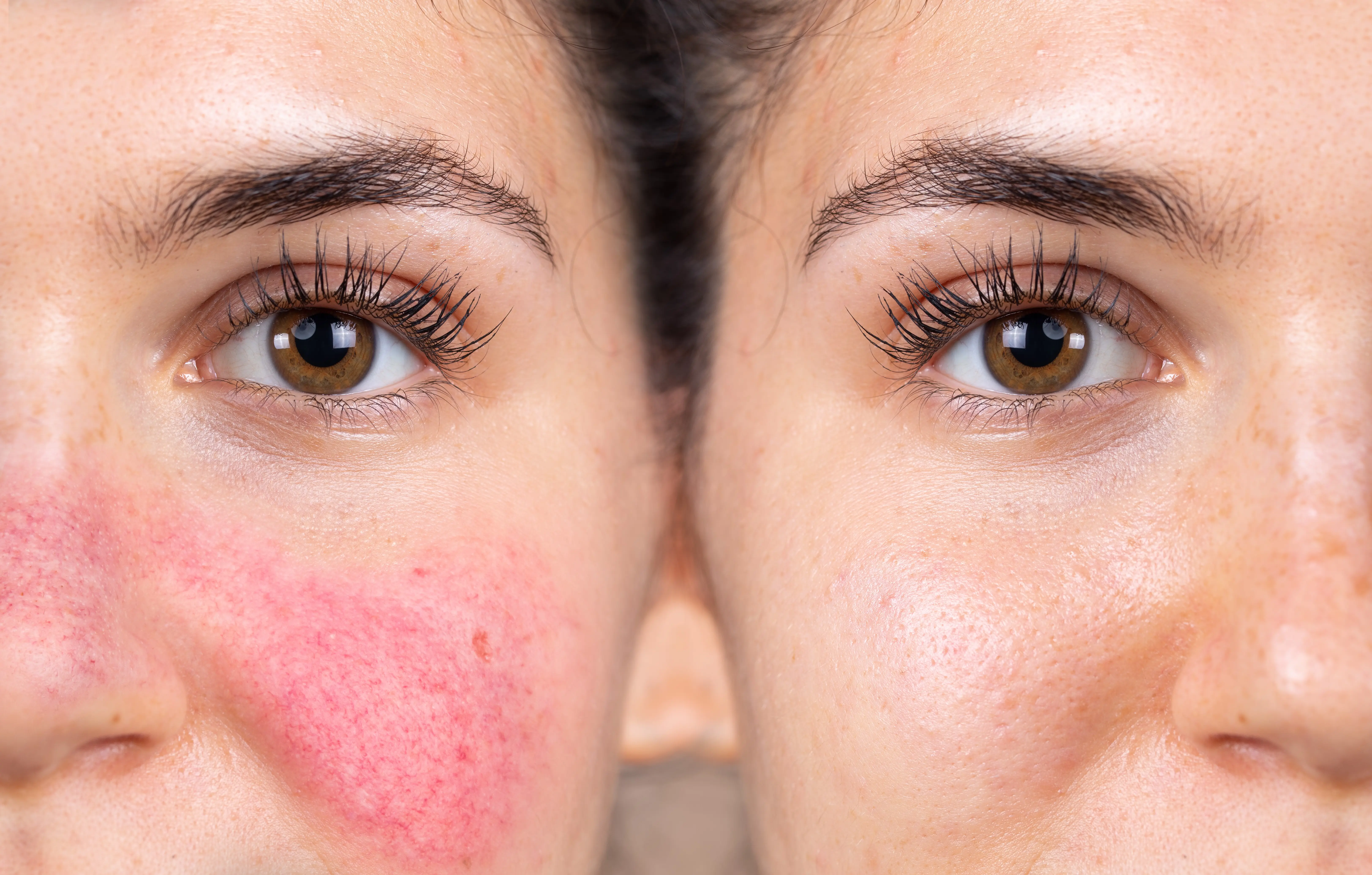
Rosacea is a common skin condition that affects more than 16 million people in the United States alone. Despite its prevalence, there is still much confusion surrounding this chronic disorder. In this blog post, we will discuss what rosacea is, what causes it, and how it appears on the skin. We will also explore treatment options and ways to manage symptoms for those living with this condition.
Rosacea is a chronic skin disorder that primarily affects the face. It is characterized by redness, flushing, and visible blood vessels on the cheeks, nose, chin, and forehead. In some cases, it may also affect the neck and chest area. Other common symptoms include small red bumps or pustules, skin thickening, and eye irritation.
The exact cause of rosacea is still unknown, but researchers believe that a combination of genetic and environmental factors play a role. Some studies suggest that people with fair skin who are prone to flushing may be more likely to develop rosacea. Additionally, certain triggers have been identified to worsen symptoms, including:
It is important to note that rosacea is not caused by poor hygiene or bacterial infection, as commonly believed. In fact, excessive scrubbing or use of harsh skincare products can aggravate the condition.
Rosacea can appear differently in individuals, and symptoms may vary in severity. The most common presentation is persistent redness on the central face, often mistaken for blushing or sunburn. In some cases, bumps and pimples similar to acne may also be present. As the condition progresses, visible blood vessels (telangiectasia) may become more prominent, and the skin may thicken and develop a bumpy texture.
Although there is no cure for rosacea, various treatment options are available to manage symptoms and improve the overall appearance of the skin. These include:
Apart from seeking medical treatment, there are also ways to manage rosacea in daily life. These include:
Rosacea may not have a definitive cause or cure, but it can be effectively managed with proper treatment and lifestyle adjustments. Understanding the condition, its symptoms, and available treatments is crucial in helping those living with rosacea lead a fulfilling life. If you suspect that you may have rosacea, consult a dermatologist for an accurate diagnosis and personalized treatment plan. To learn more about rosacea and possible treatments, visit Skinfluence in South West, Calgary.